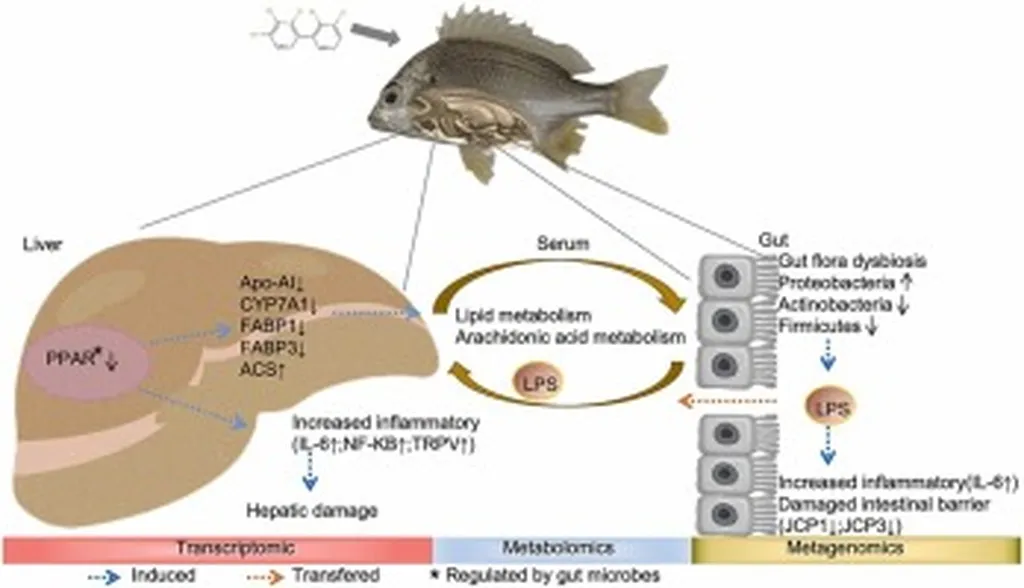In the vast and intricate web of aquatic ecosystems, a silent threat is lurking, one that could have profound implications for both marine life and the industries that depend on it. A recent study published in *Environmental Chemistry and Ecotoxicology* (translated from Chinese as *环境化学与生态毒理学*) has shed light on the toxic effects of perfluorohexanoic acid (PFHxA) on the commercially valuable large yellow croaker (Larimichthys crocea). The research, led by Ping Han from the Key Laboratory of Aquacultural Biotechnology at Ningbo University, delves into the complex interplay between the gut and liver of these fish, offering insights that could reshape our understanding of pollutant assessment and intervention strategies.
PFHxA, a short-chain perfluoroalkyl substance (PFAS), has been touted as a safer alternative to long-chain PFAS. However, its environmental persistence and bioaccumulation potential pose significant health risks to aquatic organisms. Han and her team exposed juvenile large yellow croakers to low concentrations of PFHxA for 14 days, employing a multi-omics approach to unravel the toxic effects.
The study revealed that PFHxA exposure led to a cascade of detrimental effects in the fish. “We observed an increase in villus width and inflammatory cells in the gut, with the severity of damage escalating over time,” Han explained. The gut microbiome analysis showed dysbiosis, with a decrease in Firmicutes and an increase in Proteobacteria, indicating that PFHxA compromised the gut’s physical barrier and disrupted microbial balance.
The consequences of this disruption were not confined to the gut. PFHxA and its metabolites, originating from the abnormal gut microbiota, were absorbed and metabolized in the liver. The degree of liver damage, including vacuolization and hemorrhagic inflammation, increased with prolonged PFHxA exposure. Molecular evidence confirmed that the liver first recognized these substances through calcium ions (Ca2+)-related pathways, followed by the involvement of inflammatory immune-related pathways, and eventually leading to RNA degradation and cell death.
This research highlights the complex interplay between the gut and liver in metabolizing PFHxA, offering a new perspective on the biological risks of pollutant assessment. The findings could have significant implications for the aquaculture industry, which relies heavily on commercially valuable marine fish like the large yellow croaker. Understanding the toxicity mechanisms of PFHxA could pave the way for targeted interventions, ensuring the health and sustainability of these fish populations.
Moreover, the study’s insights could extend to other sectors, including the energy industry, where PFAS are commonly used in various applications. As the world grapples with the environmental impacts of these substances, research like Han’s provides a crucial stepping stone towards developing safer alternatives and effective mitigation strategies.
In the words of Han, “Our results demonstrated the necessity of the gut-liver axis of L. crocea to combat PFHxA and might provide new insights for targeted interventions in commercially valuable marine fish exposed to short-chain PFAS.” This research not only advances our understanding of the ecological impacts of PFHxA but also opens up new avenues for protecting our aquatic ecosystems and the industries that depend on them.

